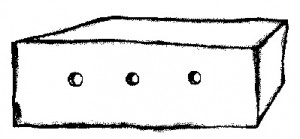In his writing on Architecture and Atmosphere Mark Wigley is arguing several fundamental to the architectural practice concepts: the importance of atmosphere and what really creates it in a project, architectural representation of atmosphere and how it differs with the diverse design scales: from a city to a building.
The long tradition of architectural theory suggests that architecture is a complex medium, the mere purpose of which is to create a theatrical effect – an atmosphere. It is an intangible collection of particles that surrounds a certain configuration of walls and floors, and is volatile with the addition of a human touch to the building. Wigley’s writing raises several questions: who or what is the creator of an atmosphere: an architect or the inhabitant? Can a complete and fulfilling atmosphere be sole designed by an architect? What is the value of architecture as a design field if an inhabitant contributes as much input to the creation of a given “atmosphere” as does the long months of work of an architect?
Since early works of Frank Lloyd Write “architectural representation” became an expression that goes hand-in-hand with the word “atmosphere”. Several decades ago architects have already understood the importance of showcasing the best parts of the project design and even further enhancing its effects on the surrounding and vice versa, inherently influencing the project’s commission and revenue values. While some rejected the idea of manipulating the representational medium, the majority of designers continued creating idealized images of the pseudo-real projects. Hence, further embedding the value of architectural representation visual “atmospherics” into the monetary equation of architecture as a business. Thus, an atmosphere of a building is no longer a predefined and carefully articulated “soul” of the design, but rather a mere commercialized product produced by “image-making artists”.






